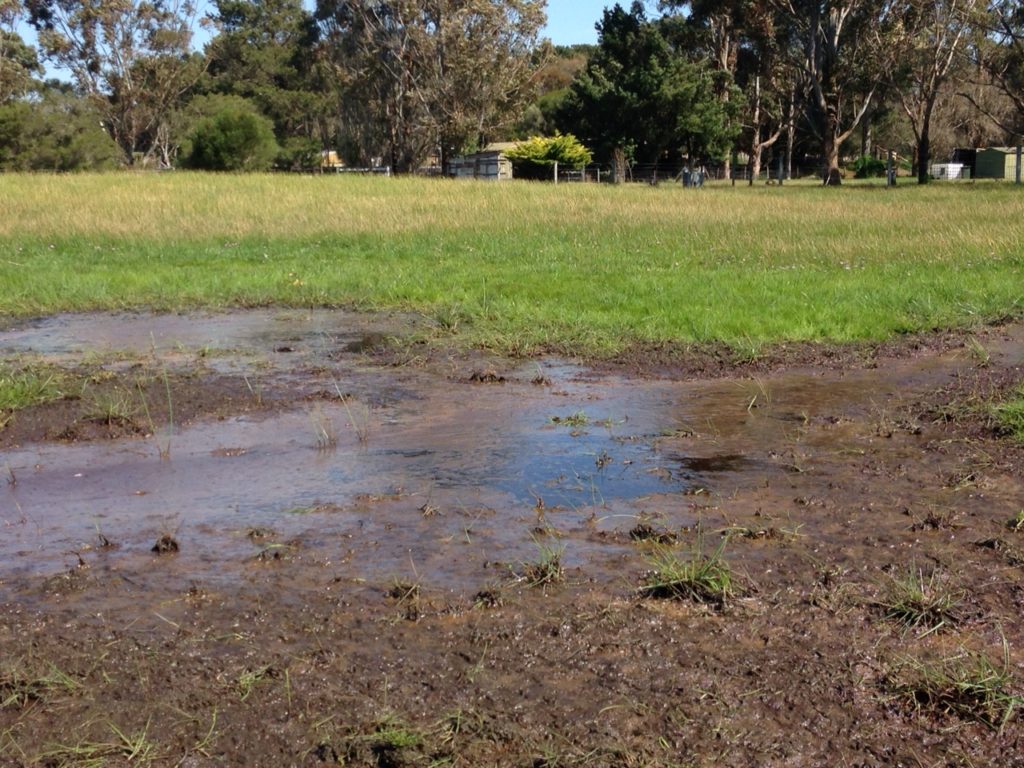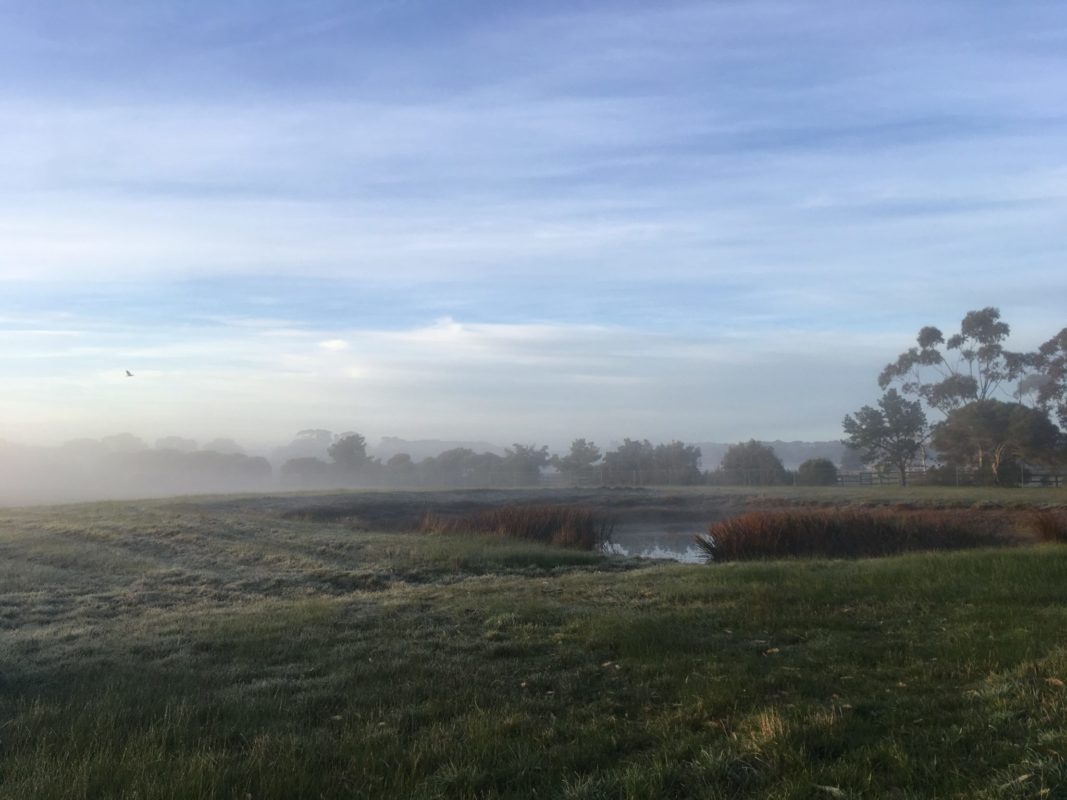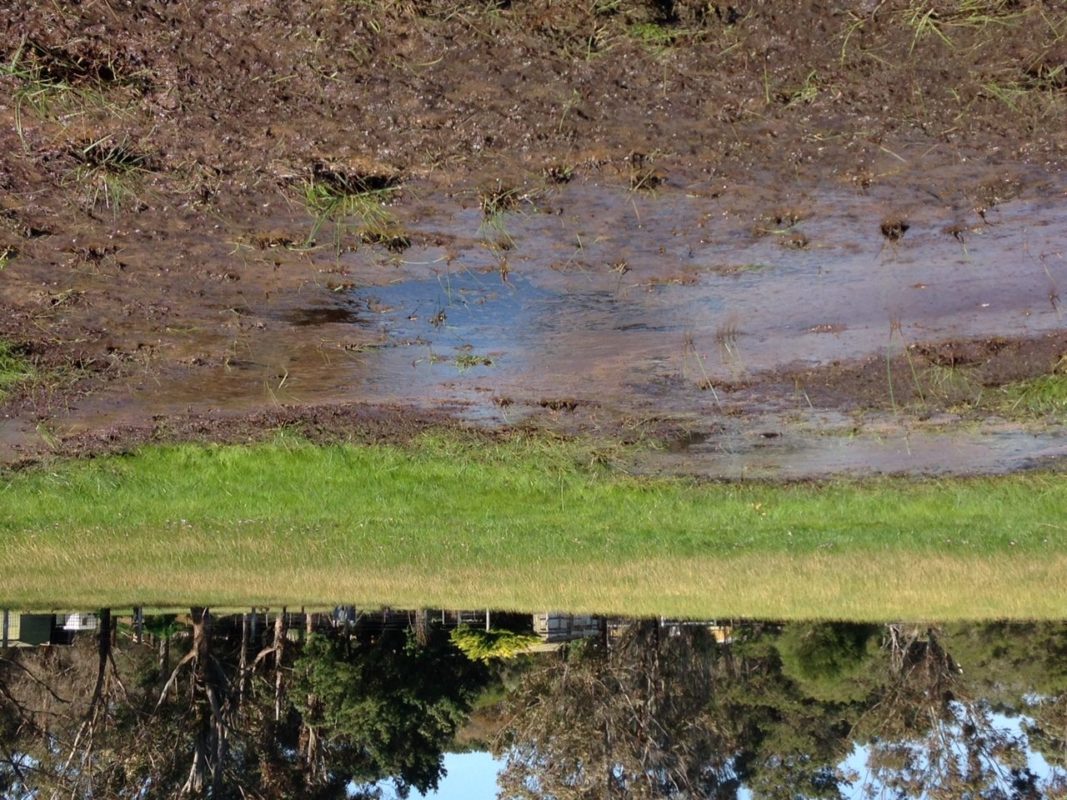As you all, know, we still aren’t living on our farm. We’re getting close, and hope to move in by the end of September. But in the meantime, we have been sticking to research rather than hands on farming.
Having said that, it’s still been a frustrating experience. I was hoping for some guidance in how to improve our land. A template to follow, if you will. And each book we’ve read has been a template to follow of sorts, but none of them fit our situation.
Linda Woodrow is one of my favourite writers, but she is much better on a home scale than on 20 acres. Her advice for improving damaged land involves running chooks and importing heaps of organic material. Other farmers I know who have tried her techniques have struggled to implement them commercially.
Bill Mollison, P A Yeomans and Peter Andrews all concentrate on large scale properties. What they have learned and written is brilliant. As well as incredibly useful: most of Australia has huge problems with low rainfall and dry soils. They all recommend holding water on your property for as long as possible. Unfortunately, I don’t think they meant in large anaerobic puddles, or mud pugs. Our average annual rainfall is around 800mm. Obviously we still need water on our property, but it’s not as simple an equation when the water has the potential to flood.
I’ve read Sepp Holzer, but most of what he covers in his book “Permaculture” involves steep slopes, and terracing as that is where he grows. Our land is flat. He does mention allowing wet areas to be wet. He recommends turning them into ponds or wetlands, but most of our property is wet, so his advice isn’t feasible for us.
I’m now partway through Masanobu Fukuoka’s The One Straw Revolution. It’s brilliant reading, but like all the others, it’s not specifically useful to us.

Our water table is quite high. According to Visualising Victoria’s Groundwater it’s roughly 5m below the surface. Our land is almost entirely flat. The soil is a heavy clay, and the worst parts of it crack dreadfully in summer. In winter it’s waterlogged and soggy.
For the last few years it’s been slashed regularly with a tractor. Our neighbour’s sheep have been overstocked and overgrazing our paddocks. The soggy paddock didn’t seem to bother either the sheep or the tractor.
We suspect severe compaction as a result.
All of this amounts to a significant problem if we want to run stock. As well as problems if we want to plant fruit trees and vines: their roots don’t like water logging. Regular annual crops also dislike water logging, and any drainage put in to deal with it, will compound the drying out over summer.
I don’t expect any of the permaculture bibles to cater to us perfectly. The idea of permaculture is that it’s based around principals, not instructions. After all, no two pieces of land are the same. Permaculture is a method of observation. You watch what occurs or doesn’t occur in nature, and replicate or avoid as you can. We can follow those principles. We will do that. We’ll experiment.
But I can’t help wishing a few more of the templates and examples given were for flat land, or compacted land, or waterlogged land. By 1992, Victoria had 1.8 million hectares of land affected by water logging. And it’s only getting worse. Water logging can lead directly to soil salinity. It’s a serious problem, throughout all of our dairy country. Ours is a severe case, with flooding and standing water sitting on the surface. As I drive to and from Moorooduc, I see a lot of our neighbours have similar situations.
Given that the problem is so prolific, I expected to find a great deal of information on it online. So far all the advise I’ve found has been on how to determine whether you need surface or subsurface drainage. Obviously all things have a place in holistic management, but I don’t think these should be the first or only port of call.
I haven’t been able to find a template, or even techniques for how to proceed. There don’t even seem to be failed experiments recorded. Perhaps ours will be the first!
We need to determine how much of our water logging is from surface water, and how much is subsurface, that is, a high water table. We’re hoping that it’s surface water struggling to drain away due to compaction and damaged soil, as that is much easier to fix. If the water table has risen high enough to be water logging the surface, longer term solutions will need to be found.
The digging on Thursday will be wet and dirty work, but hopefully it’ll help us develop a new template for people to follow.



Hey Rach,
Great to see you on your own farm! Exciting stuff.
Had some random ideas that came to mind whilst reading this post. I obviously don’t know the whole situation so are probably unfounded etc or you’ve thought of already.
– Be interesting to see how soil test come back with and if there is potential progress and way forward changing soil structure with inputs/time.
– 20 acres is large, several locations least soggy could have additional drainage added in for winter months and different locations for summer crops. Green cropping in the alternative off season locations for improving soil/drainage/carrying capacity etc.
– Narrow slightly raised beds with plastic/landscape fabric to hold together bed, just keeping the crown above surface for several crops may be enough?
– Polyface/Joel Salatin I’d presume would have an answer for something on anaerobic/flooded pasture and gaining some positive, rotating swine and improving soil.
– Have you read into Eliot Coleman and Jean Martin Fortier’s work? I can’t remember if they ever address your scale of flooding issues but worthy reads in own right.
– Steve Solomon’s book The Intelligent Gardener looks at soil biology and various inputs to open up soil structure etc. Mostly aimed at serious home/small market gardens though.
Steve’s http://soilandhealth.org/ library has free access to a bounty of information and studies. Maybe more useful to you though is a yahoo group he moderates, where about 1200+ gardeners, soil freaks and such discuss issues and ways forward for regenerative agriculture and gardening etc. Could post a question on the forum and see what gold/who turns up.
Got a little carried away, hope the summer asks easier questions and the house and ducks are going well.
Kindly,
Simeon
Hi Simeon,
Wow! What a great comment 🙂 Would love to hear what you’re up to these days too.
We are looking forward to the soil drying out enough to take samples for testing: should be in the next week or two. At the moment I’m contemplating high beds like those Sepp Holzer recommends, but definitely still investigating and experimenting.
Some stuff we’ve definitely thought of: I’ve read Eliot Coleman an Jean Martin Fortier- neither really talk about the issues we have, or whole farm systems, but both great books in terms of market gardening.
I haven’t read Steve Solomon so will have to go look him up!
I hadn’t thought of having designated summer and winter areas, at least until we can build up the soil more. Great idea! Do you know of anyone doing that sort of thing?
Anyway, great to hear from you, and good food for thought 🙂
Rach
Hello Rachael!
Stumbled across your post as I was searching for some insights on dealing with the exact same situation! My farm project is at a site which floods heavily during the rains and then in the summers the soil is hard and cracked. Our plans of planting fruit trees just before the monsoons (usually when everyone else plants them) have been completely thwarted due to the water logging!
I’m very curious to know how things proceeded for you, your experience with this matter, and if you fond any useful resources on this topic 🙂
Hi Rachel
How are things with this situation lately?
I have an almost identical setup and problem as you here in Tulbagh (south africa) and it’s hard to see our trees and crops rot every year
Permaculture is an ongoing study that is unique to everyone and every place. But it is not helping me yet. Solutions mimicking nature will cost prohibitive amounts of money.
Well, hope to hear what you did so far
Regards
Hello from Ontario Canada. I live in an area where water levels are controlled by a series of locks and dams. The yard is flooded in the summer, and low lying areas flood after every rain. The water table is only 8 inches or so from the surface. It is south facing and with no shade. Grass grows gangbusters!, but I am looking for more productive uses. I am going to try straw bale gardening in this area. My reasoning is that the excess water will be absorbed by the bale, distributing it evenly throughout the day and the plants will be raised above the surface allowed them to drain. We’ll see how it goes!!
Hi Noreen.
That sounds like a challenging environment to grow in! Trying the straw bale gardening seems an excellent idea. We would be interested to hear how that goes 🙂
Matt
I am in the same position with perpetually soggy soil in the most desirable locations (near the house). We just had the field on one side dug with ditches and flipped the sod to make berms to hopefully divert water from our creek around the area. Our land is so low that when there is a lot of rain or big meltdown in spring the whole area floods. At the very least, I should have better luck planting in the raised beds.
Another option for making berms without making dugout channels would be to use hugulkultur techniques to raise your soil levels by burying logs and placing the topsoil back on top making an elevated mound. Or just build an above ground hugulkultur mound to plant in.
We also are going to plant some trees and bushes that like wet feet to hopefully help soak up some of the excess!
Just in case it’s not something you’ve seen before, might be worth looking into chinampas, which was a method used by the Aztecs to turn waterlogged land into productive land, and is still used in parts of Mexico to this day.
https://midwestpermaculture.com/2012/12/chinampas-gardens/
https://en.wikipedia.org/wiki/Chinampa
Also, here’s a blog post that has some thoughts about adapting the chinampa approach to colder climates:
http://thunderbaypermaculture.blogspot.com/2014/08/what-to-do-with-swampy-land_19.html
So…with no updates that I can see, what is the reader to assume?